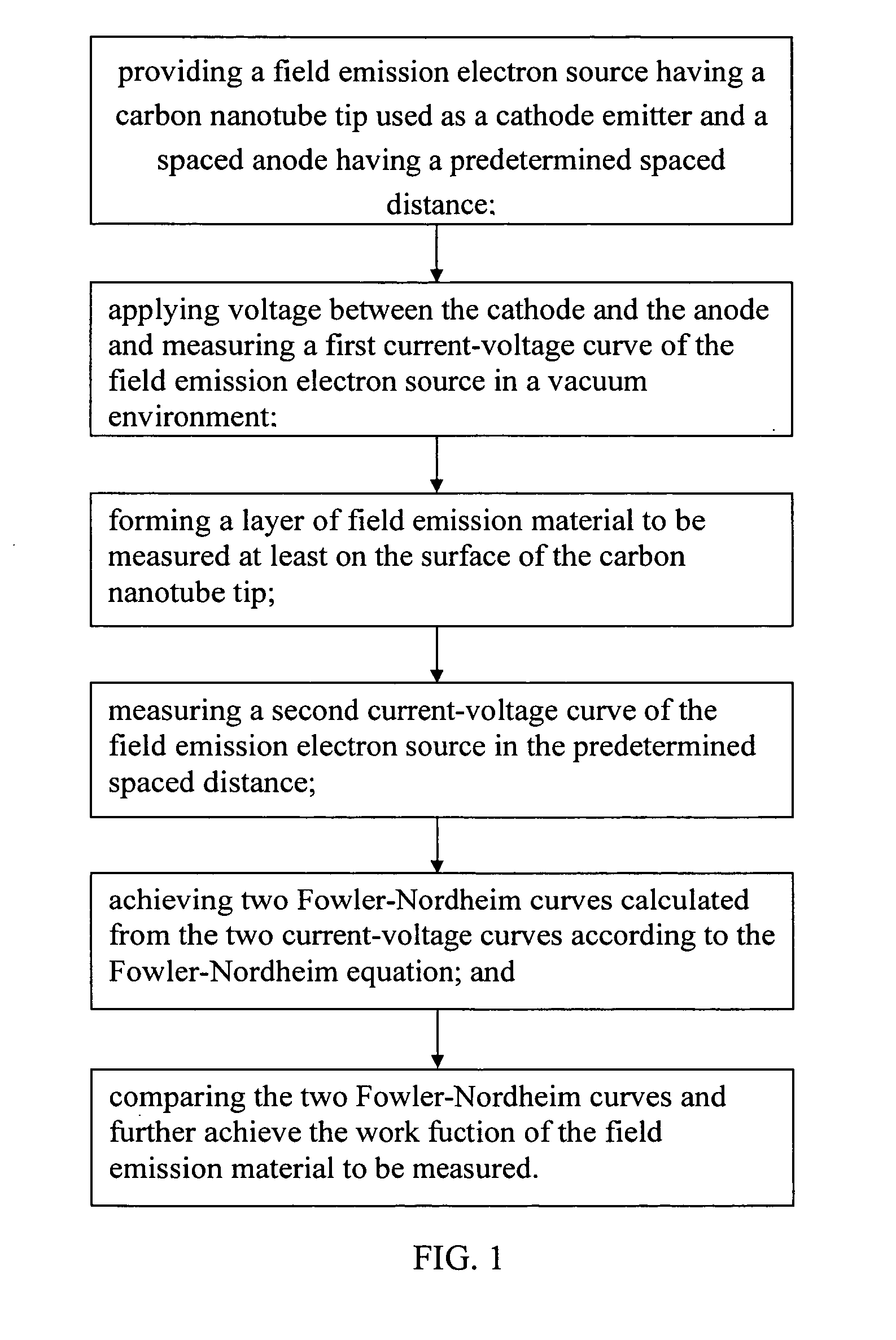Method for measuring work function
a work function and measurement method technology, applied in the direction of individual semiconductor device testing, discharge tube/lamp details, instruments, etc., can solve the problems of inconvenient thermionic emission, inability to accurately measure the work function, and metals with higher melting points that have a higher work function
- Summary
- Abstract
- Description
- Claims
- Application Information
AI Technical Summary
Benefits of technology
Problems solved by technology
Method used
Image
Examples
Embodiment Construction
[0017] Reference will now be made to the drawings to describe embodiments of the present method for measuring work function, in detail.
[0018] Referring to FIG. 1, an embodiment of the present method for measuring work function is provided. The embodiment includes the following steps: [0019] step (a), providing a field emission electron source having an uncoated carbon nanotube tip, used as a cathode emitter, and a spaced anode plate, the nanotube tip and the spaced anode having a predetermined spaced distance; [0020] step (b), applying a voltage between the cathode and the anode and measuring a first current-voltage curve of the uncoated field emission electron source in a vacuum environment and at the predetermined spaced distance; [0021] step (c), forming a layer of a field emission material at least on a surface of the carbon nanotube tip to form a coated field emission electron source, with the work function of the field emission material to be measured; [0022] step (d), measur...
PUM
 Login to View More
Login to View More Abstract
Description
Claims
Application Information
 Login to View More
Login to View More - R&D
- Intellectual Property
- Life Sciences
- Materials
- Tech Scout
- Unparalleled Data Quality
- Higher Quality Content
- 60% Fewer Hallucinations
Browse by: Latest US Patents, China's latest patents, Technical Efficacy Thesaurus, Application Domain, Technology Topic, Popular Technical Reports.
© 2025 PatSnap. All rights reserved.Legal|Privacy policy|Modern Slavery Act Transparency Statement|Sitemap|About US| Contact US: help@patsnap.com



